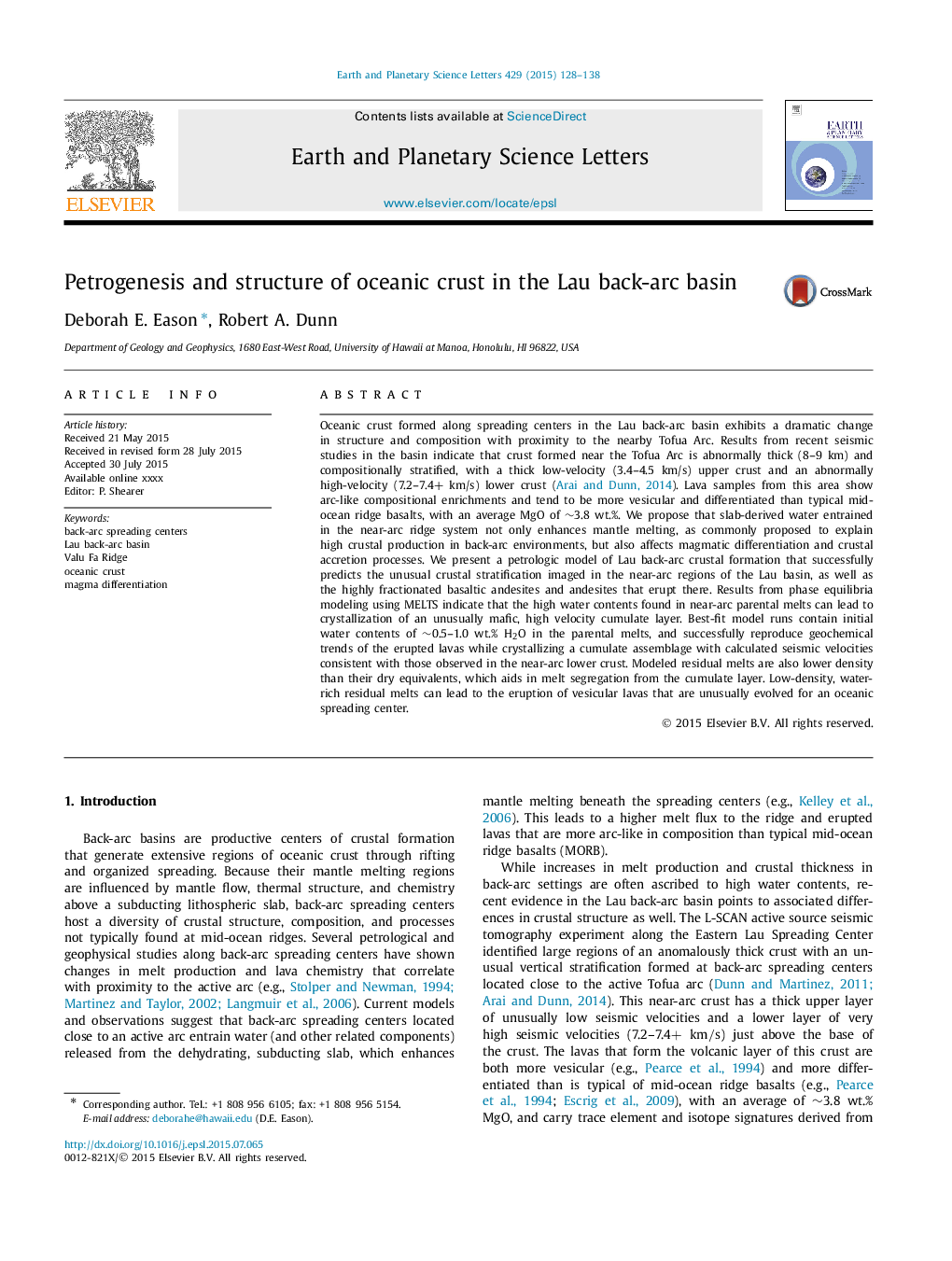| کد مقاله | کد نشریه | سال انتشار | مقاله انگلیسی | نسخه تمام متن |
|---|---|---|---|---|
| 6428188 | 1634727 | 2015 | 11 صفحه PDF | دانلود رایگان |
عنوان انگلیسی مقاله ISI
Petrogenesis and structure of oceanic crust in the Lau back-arc basin
ترجمه فارسی عنوان
پتروژن و ساختار پوسته اقیانوسی در حوضه پشتی لوا
دانلود مقاله + سفارش ترجمه
دانلود مقاله ISI انگلیسی
رایگان برای ایرانیان
موضوعات مرتبط
مهندسی و علوم پایه
علوم زمین و سیارات
علوم زمین و سیاره ای (عمومی)
چکیده انگلیسی
Oceanic crust formed along spreading centers in the Lau back-arc basin exhibits a dramatic change in structure and composition with proximity to the nearby Tofua Arc. Results from recent seismic studies in the basin indicate that crust formed near the Tofua Arc is abnormally thick (8-9 km) and compositionally stratified, with a thick low-velocity (3.4-4.5 km/s) upper crust and an abnormally high-velocity (7.2-7.4+ km/s) lower crust (Arai and Dunn, 2014). Lava samples from this area show arc-like compositional enrichments and tend to be more vesicular and differentiated than typical mid-ocean ridge basalts, with an average MgO of â¼3.8 wt.%. We propose that slab-derived water entrained in the near-arc ridge system not only enhances mantle melting, as commonly proposed to explain high crustal production in back-arc environments, but also affects magmatic differentiation and crustal accretion processes. We present a petrologic model of Lau back-arc crustal formation that successfully predicts the unusual crustal stratification imaged in the near-arc regions of the Lau basin, as well as the highly fractionated basaltic andesites and andesites that erupt there. Results from phase equilibria modeling using MELTS indicate that the high water contents found in near-arc parental melts can lead to crystallization of an unusually mafic, high velocity cumulate layer. Best-fit model runs contain initial water contents of â¼0.5-1.0 wt.% H2O in the parental melts, and successfully reproduce geochemical trends of the erupted lavas while crystallizing a cumulate assemblage with calculated seismic velocities consistent with those observed in the near-arc lower crust. Modeled residual melts are also lower density than their dry equivalents, which aids in melt segregation from the cumulate layer. Low-density, water-rich residual melts can lead to the eruption of vesicular lavas that are unusually evolved for an oceanic spreading center.
ناشر
Database: Elsevier - ScienceDirect (ساینس دایرکت)
Journal: Earth and Planetary Science Letters - Volume 429, 1 November 2015, Pages 128-138
Journal: Earth and Planetary Science Letters - Volume 429, 1 November 2015, Pages 128-138
نویسندگان
Deborah E. Eason, Robert A. Dunn,
